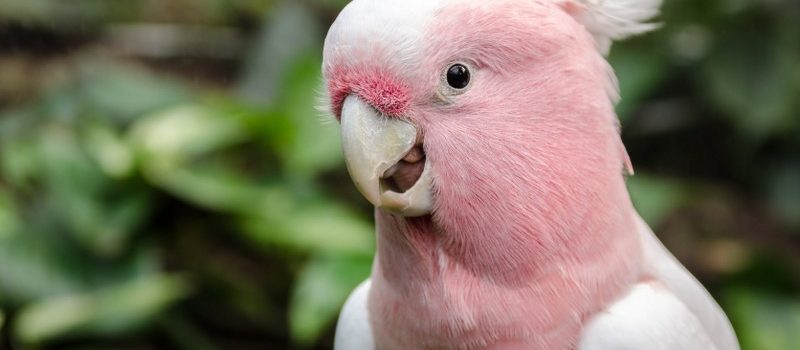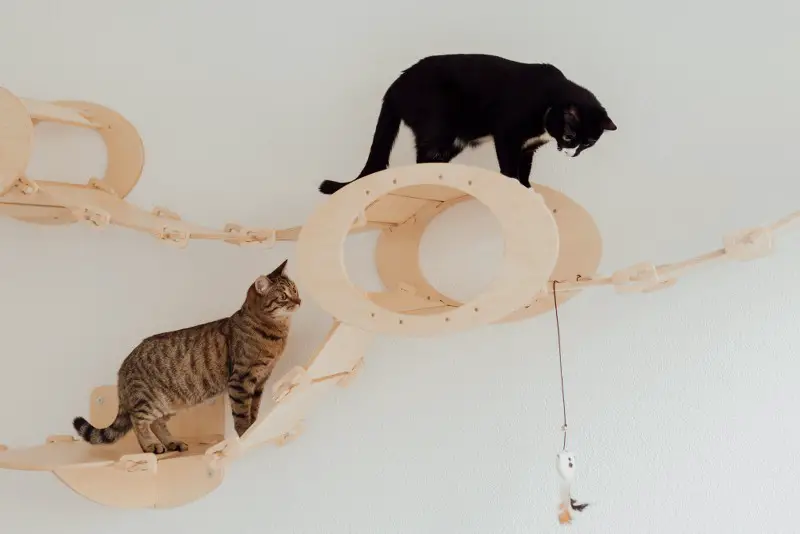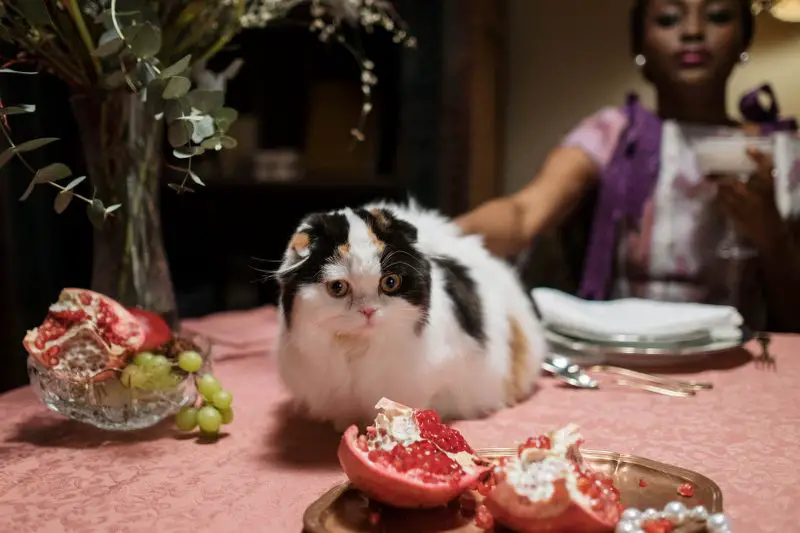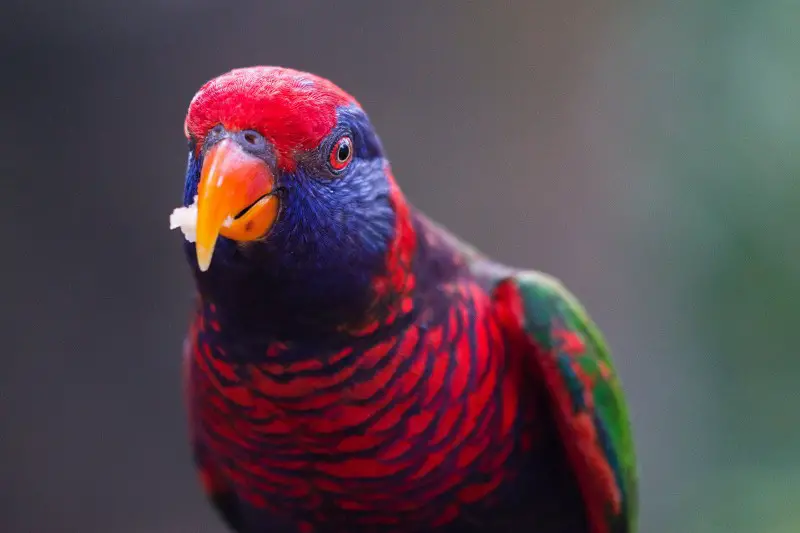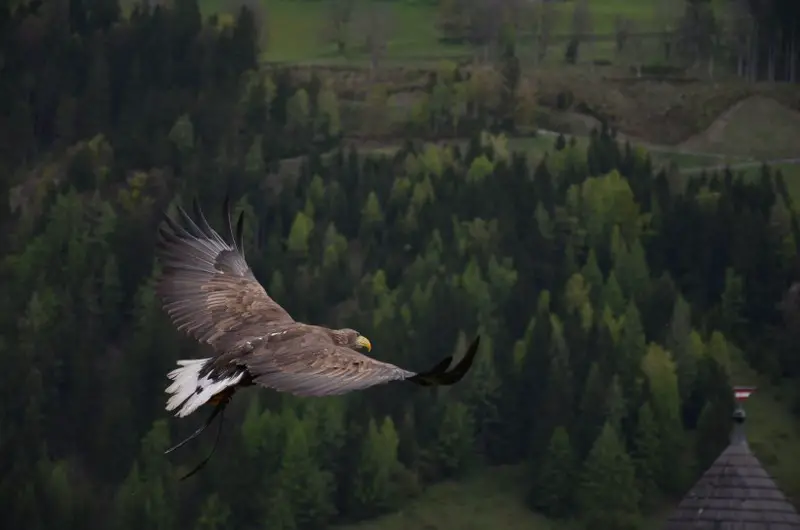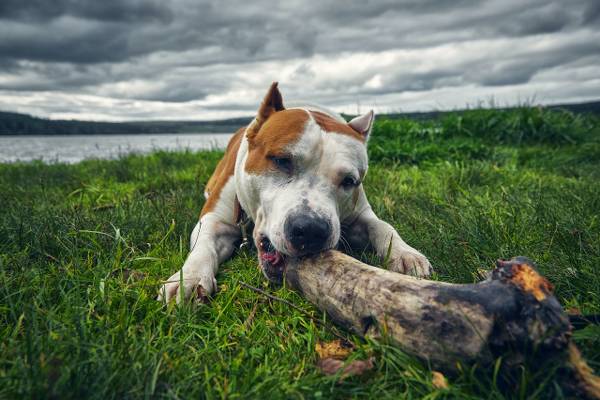Crested birds are a fascinating group of avian species characterized by distinct feathered crests on their heads. These bird crests are composed of specialized feathers that can be raised or lowered, allowing these birds to express a range of emotions, communicate with one another, and serve various functional purposes. The crest of a bird is typically found on the top of the bird’s head and can vary in shape, size, and color, making them an intriguing feature for bird enthusiasts and researchers alike.
What Are Bird Crests Made Of?
The bird crest is made up of elongated feathers that differ in texture and color from the rest of the plumage. They can be flamboyant and brightly colored in some species, such as the Northern Cardinal, or more subtle and earth-toned in others like the Great Horned Owl. The crest of a bird can be erect and conspicuous during certain behaviors, such as territorial displays, mating rituals, or when the bird feels threatened. Alternatively, they can be flattened against the head, blending in with the surrounding plumage when the bird wishes to remain inconspicuous. Also, check out 8 Best Pet Birds That Talk!
Notable Crested Bird Species
Birds with crest vary significantly across different species, reflecting the specific ecological niches and behaviors of each bird. For example:
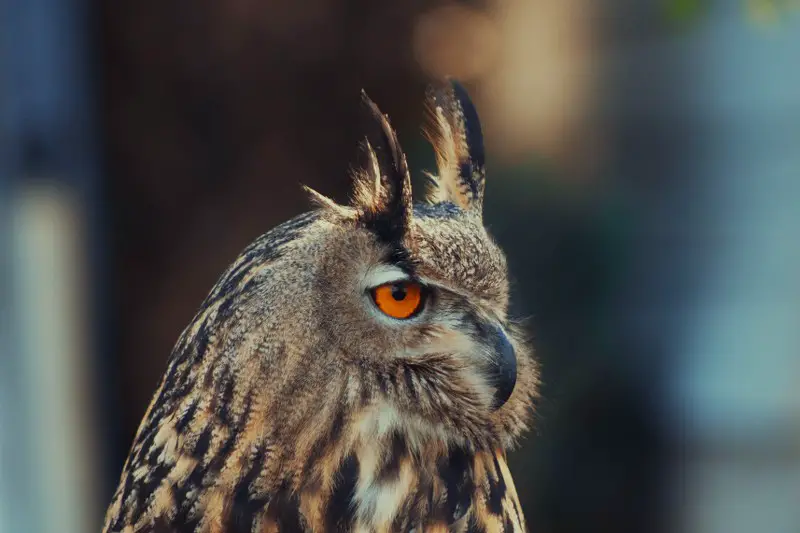
The Great Horned Owl (Bubo virginianus) is a formidable raptor found throughout the Americas. Known for its distinctive “horns,” which are tufted ear-like feathers, it’s a robust, adaptable bird with various characteristics. Great Horned Owls possess a large wingspan, powerful talons, and keen nocturnal vision, allowing them to be formidable predators. They have a mottled brown and white plumage that provides excellent camouflage. These owls are highly territorial and skilled hunters, preying on a wide range of animals, from rodents to other birds. Their haunting hoots punctuate the night, marking their presence in a variety of ecosystems, including forests, deserts, and urban areas.
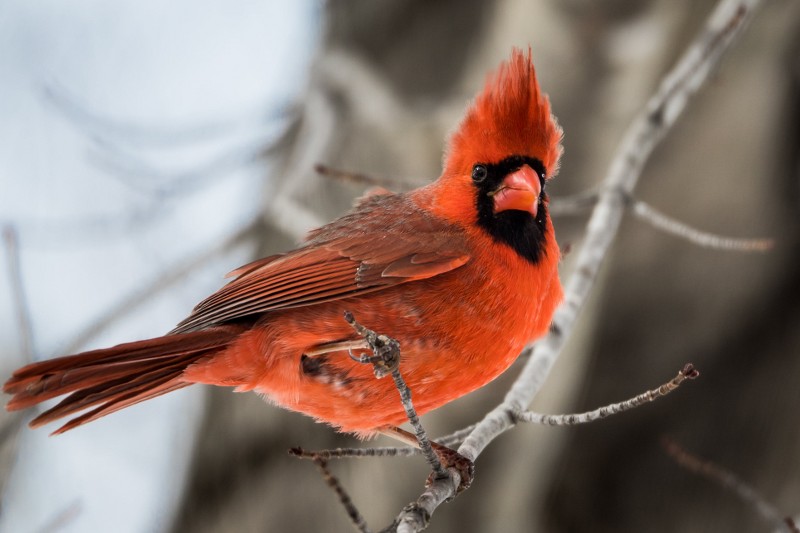
The Northern Cardinal (Cardinalis cardinalis) is a striking songbird found in North America. Male cardinals are known for their vibrant plumage, with brilliant crimson bodies and black masks on their faces, while females have a more subdued tan and red coloring. They possess a distinctive crest on their heads, adding to their visual appeal. Cardinals are skilled songbirds, known for their musical and clear whistling calls, which they use for communication and territorial marking. They are typically non-migratory, staying in their territories year-round, and are often seen in woodlands, gardens, and suburban areas. These birds are granivorous, feeding primarily on seeds and fruits.
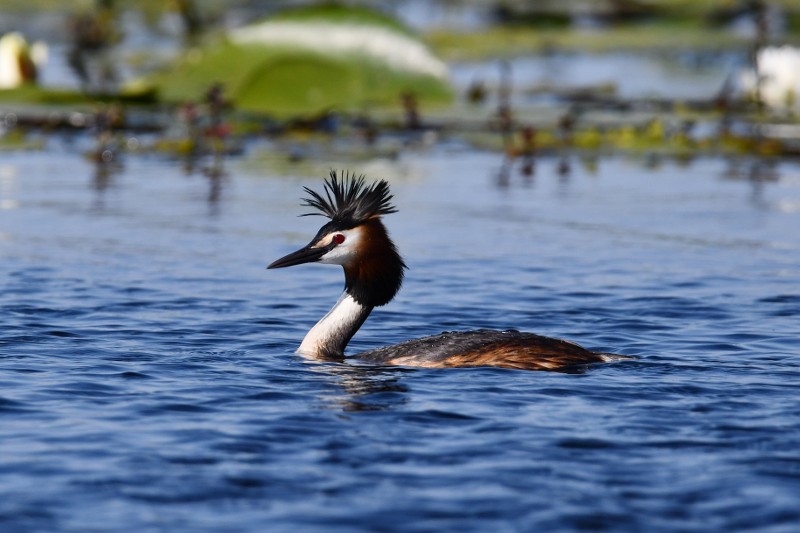
The Great Crested Grebe (Podiceps cristatus) is a striking waterbird inhabiting lakes and ponds across Europe, Asia, and parts of Africa. This elegant bird features a long, slender neck, a distinctive black crown, and a rufous chestnut ruff around the eyes during the breeding season. Their crests, or “horns,” are less conspicuous but lend charm to their appearance. Great Crested Grebes are known for their intricate courtship displays, involving synchronized dances and “weed dance” offerings. They are skilled divers, adept at catching fish and aquatic invertebrates. Their distinctive appearance, courtship rituals, and agile aquatic behavior make them a fascinating sight in wetland ecosystems.
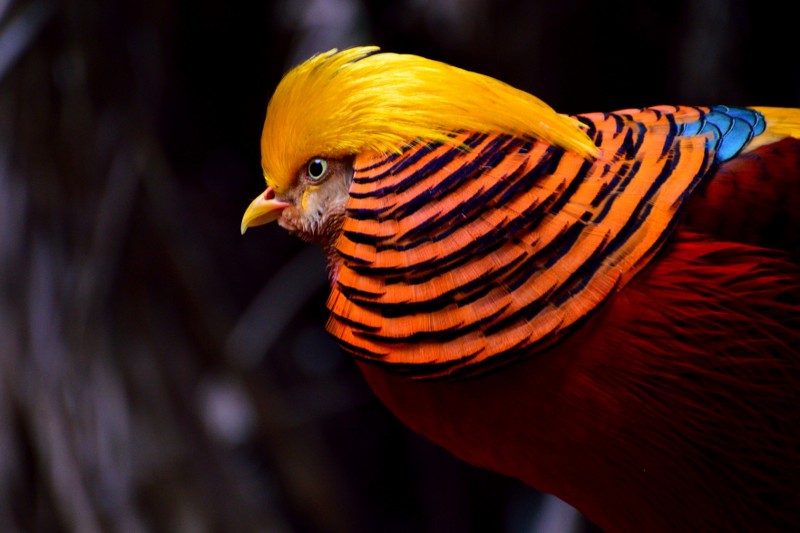
The Golden Pheasant (Chrysolophus pictus) is a brilliantly colored bird native to China. This avian species exhibits flamboyant plumage, characterized by vibrant golden-yellow feathers, red underparts, and a striking ruff of blue and orange around the face and neck. Its long and ornate tail, often measuring up to 1.4 meters, enhances its regal appearance. These pheasants are ground-dwelling birds, primarily inhabiting forested mountainous regions. Their stunning appearance, with intricate patterns and colors, makes them a symbol of beauty and a popular ornamental bird worldwide.
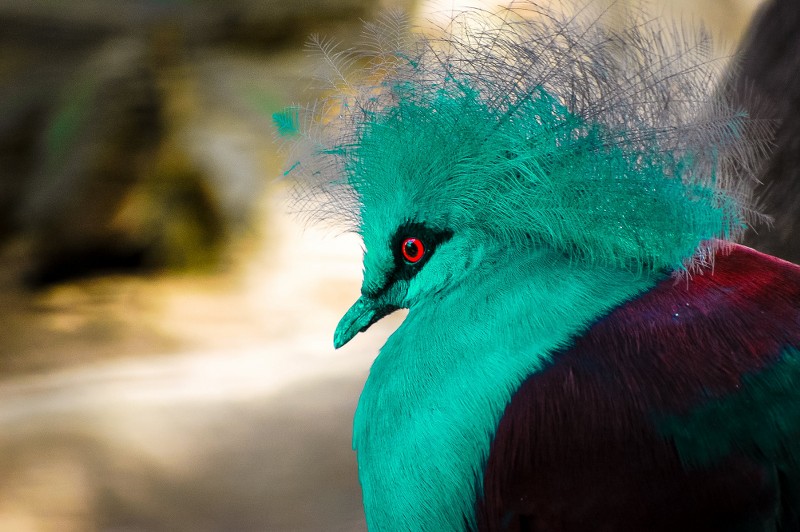
The Victoria Crowned Pigeon (Goura victoria) is a majestic, ground-dwelling bird endemic to Papua New Guinea. It is renowned for its stunning appearance, featuring distinctive, elaborate blue and white plumage, a striking crown of lacy, white-tipped feathers on its head, and vibrant red eye patches. This species can reach a length of about 74 cm, making it one of the largest pigeons globally. Victoria Crowned Pigeons inhabit lowland and swamp forests, and their diet primarily consists of fruits and seeds. These pigeons are known for their shy and gentle nature, and their striking appearance has made them a symbol of grace and beauty in the avian world.
Importance and Diversity of Crest Bird Species
Crest bird species encompass a wide array of avian families and orders, showcasing the diversity and adaptability of birds across the world. These species hold immense importance in various ecosystems and the study of ornithology for several reasons.
1. Biodiversity: Birds with crests are found on every continent, inhabiting diverse environments from dense rainforests to arid deserts. They play unique roles within their ecosystems, contributing to the overall biodiversity of avian species worldwide.
2. Ecological Functions: Many crested birds are essential for maintaining ecological balance by controlling insect populations, dispersing seeds, or serving as indicators of environmental health. For example, the resplendent quetzal, known for its striking crest, plays a vital role in the ecosystems of Central and South America.
3. Cultural Significance: Crested birds often hold cultural and symbolic significance in different societies. They have been featured in folklore, art, and mythology, representing concepts like freedom, beauty, and even spirituality in various cultures.
4. Conservation: Several birds with crests are endangered or threatened due to habitat loss, climate change, and other human-induced factors. Their conservation is essential to preserve the planet’s avian diversity.
Physical Characteristics of Crested Birds
Crested birds are renowned for their distinctive physical characteristics, particularly the crests that adorn their heads. These crests vary greatly in shape, size, and feather structure, and they are often accompanied by unique coloration and patterns. This section delves into the physical aspects that make crested birds stand out and highlights the diversity of crests among different species.
1. Shape and Size:
Birds with crests come in a wide range of shapes and sizes, reflecting the diversity of avian species. Some crests are elongated plumes that extend gracefully from the bird’s head, such as those of the resplendent quetzal. These crests can be several inches long and dramatically enhance the bird’s appearance. In contrast, other crests are shorter and more compact, like the striking crests of the Northern Cardinal, which add a dash of color to the bird’s head without being overly large. Crests can be slender and streamlined or broad and fan-like, depending on the species.
2. Feather Structure:
The structure of crest feathers differs from regular plumage. Crest feathers tend to be elongated and often possess a distinct texture. In some species, these feathers are soft, silky, and iridescent, as seen in the Violet Turaco. This texture enhances the aesthetic appeal of the crest and is often used during courtship displays or other social interactions. The unique feather structure also allows crested birds to manipulate their crests, raising or lowering them as needed to convey emotions or communicate with others.
3. Coloration and Patterns:
The coloration and patterns of crested birds’ crests are as diverse as the birds themselves. Some crests are brightly colored, featuring striking hues like brilliant red, electric blue, or vibrant green. These vivid colors play a crucial role in attracting mates during courtship displays and can also be a form of visual communication within their species. The crests of birds like the Harpy Eagle, with its bold black and white markings, are designed for camouflage and concealment within their forested habitats. In contrast, species like the Victoria Crowned Pigeon exhibit intricate patterns, resembling a regal crown, which serves both for display and recognition.
Why Do Birds Have Crests
Crests in birds serve a multitude of functions, reflecting the remarkable adaptability and versatility of these avian features. From communication and signaling to camouflage, courtship displays, and thermoregulation, these distinctive head ornaments play a crucial role in the lives of birds with crest.
1. Communication and Signaling:
Crests are essential tools for communication within and between bird species. Raised or lowered crests can convey various emotions, intentions, or signals. For example, a raised crest in some species, like the Cockatiels, can signify alertness or curiosity, while a flattened crest may indicate relaxation or contentment. Birds with a crest can also play a role in social hierarchies, with dominant individuals often displaying more pronounced or raised crests to assert their status. In some bird species, such as the Hoopoe, crest movements are part of complex social interactions and vocalizations that communicate within their groups.
2. Camouflage and Protection:
Birds with crests have evolved to serve effective camouflage and protection mechanisms. For instance, the Great Horned Owl’s tufted “horns” are not ears but serve to break up its outline, helping it blend seamlessly with the surrounding tree branches while perched. When threatened or alarmed, these owls can further erect their crests, making themselves appear more formidable and less vulnerable to predators. Similarly, the crests of certain tree-dwelling birds can mimic leaves, branches, or other natural elements, aiding in concealment from potential threats.
3. Display and Courtship:
One of the most captivating functions of crests is their role in courtship displays and mate attraction. Many birds with a crest use it as striking visual displays to capture the attention of potential mates. For example, male Northern Cardinals use their vivid red crests to attract females during intricate courtship rituals. The vibrant colors, patterns, and the ability to raise and lower the crest contribute to these elaborate displays. In species like the Great Crested Grebe, the crest’s elegance and size signal readiness for breeding and commitment to a mate.
4. Thermoregulation:
Crests can also play a role in regulating a bird’s body temperature. When a bird raises its crest, it exposes the skin beneath the feathers to the air, allowing for increased heat dissipation during warm weather. Conversely, lowering the crest can help conserve body heat in cold temperatures. Birds like pigeons, doves, and some species of parrots may utilize this thermoregulatory function of their crests to maintain a comfortable body temperature, ensuring their survival in a variety of climates.
Crested Bird Observation and Photography
Birdwatching is a popular hobby, and capturing crested birds through photography can be a rewarding endeavor. Here are some essential aspects to consider for crested birds identification:
Tips for Birdwatching:
1. Patience: Observe quietly, be patient, and maintain a respectful distance to avoid startling the birds.
2. Learn Bird Calls: Familiarize yourself with the calls and behaviors of the specific bird crested beauty you are seeking
3. Timing: Early mornings and late afternoons are ideal for birdwatching when many birds are active.
4. Use Field Guides: Carry bird field guides or apps to help with identification.
Equipment for Bird Photography:
1. Camera: Invest in a DSLR or mirrorless camera with a telephoto lens for better close-ups.
2. Tripod: A sturdy tripod stabilizes the camera and reduces camera shake.
3. Camouflage: Wear muted, natural-colored clothing to blend into the surroundings.
4. Patience: Like birdwatching, patience is essential to capture the perfect shot.
Popular Crested Bird-Watching Destinations:
1. Central Park, New York: Home to diverse bird species, including Northern Cardinals and other crested birds.
2. Costa Rica: Offers opportunities to spot various crested species, such as toucans and trogons.
3. Borneo, Malaysia: Home to the rare and exquisite Rhinoceros Hornbill.
4. South Africa: The Knysna Turaco can be observed in lush forests.
5. Galapagos Islands: Observe the beautiful Galapagos Penguin with its unique crest.
Conclusion
Crested birds exhibit a fascinating array of physical characteristics, with their crests being a prominent feature. These crests come in various shapes, sizes, and colors, reflecting the diverse functions they serve. Crests can communicate emotions, aid in camouflage and protection, play a vital role in courtship rituals, and even assist in thermoregulation. Crested birds include a wide range of species, each with its unique crest variations that align with their ecological roles. Conservation efforts are crucial to protect crested birds and their habitats, as they face threats from habitat destruction, pollution, and climate change, among others. Despite these challenges, dedicated organizations work to ensure the survival of these captivating and diverse bird species.

